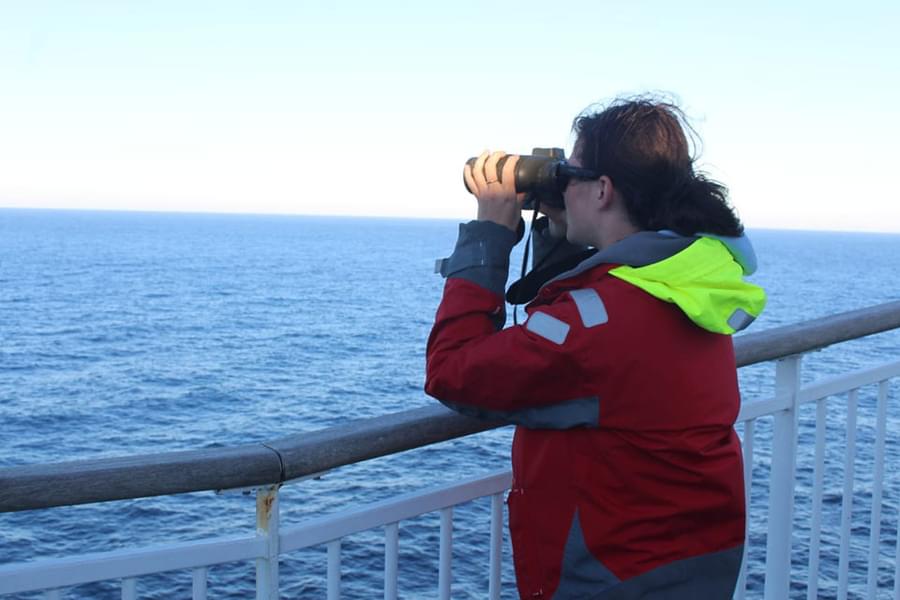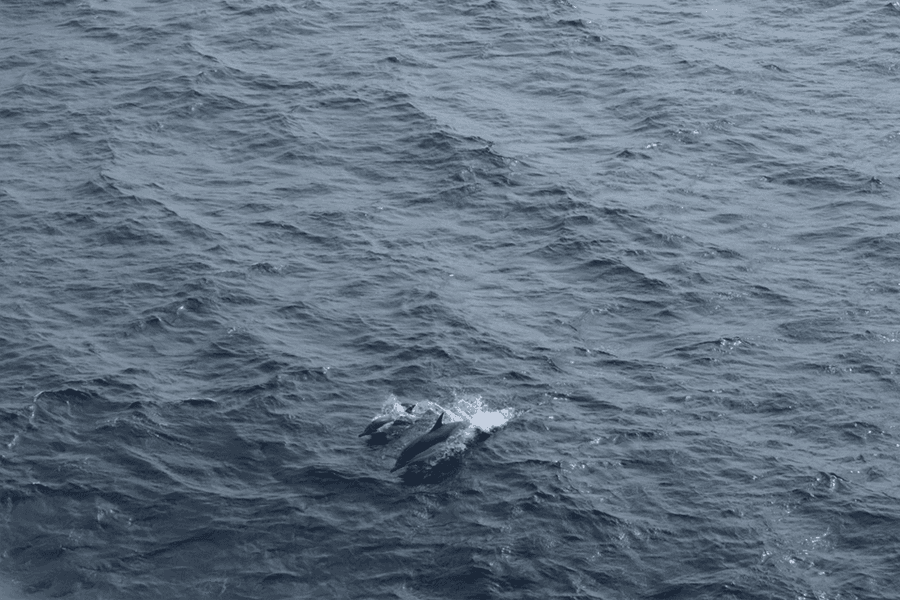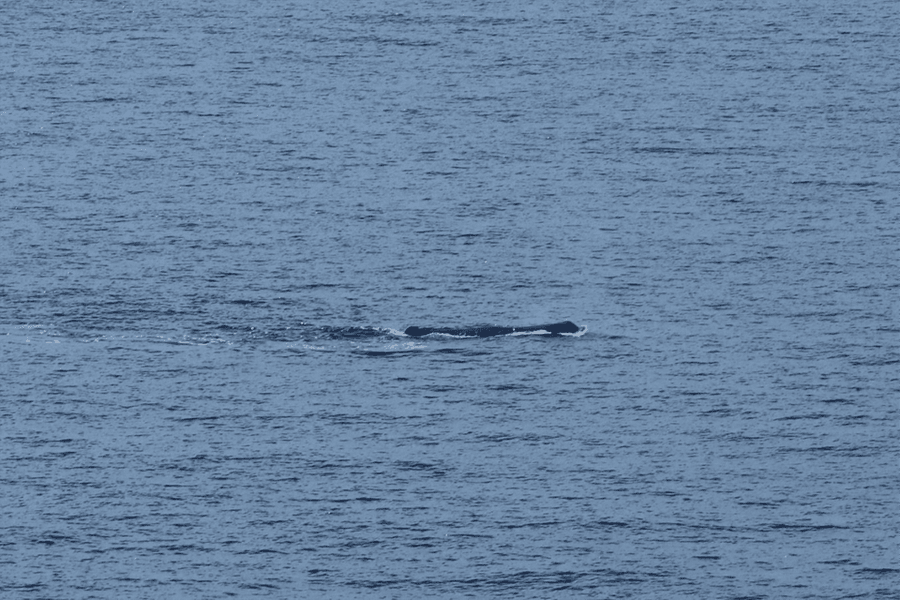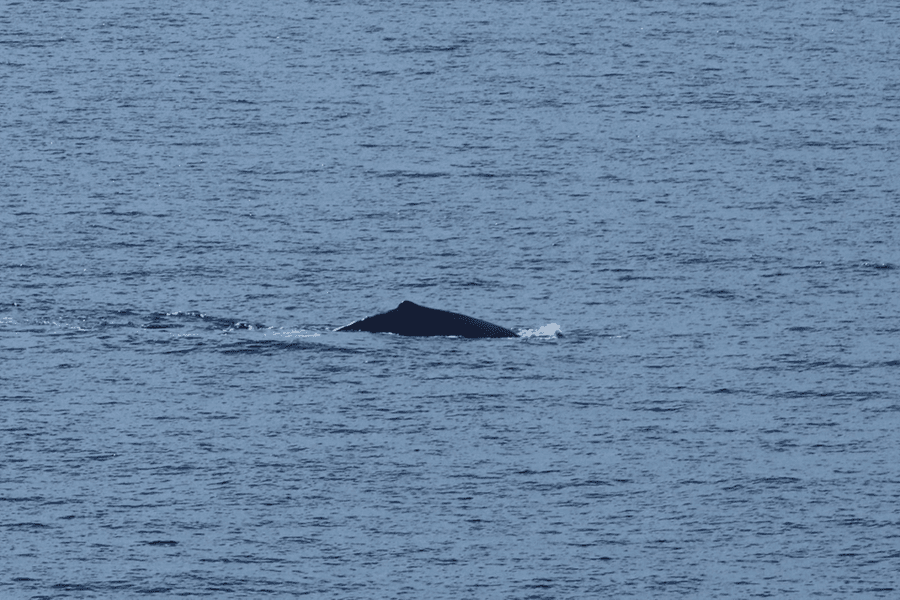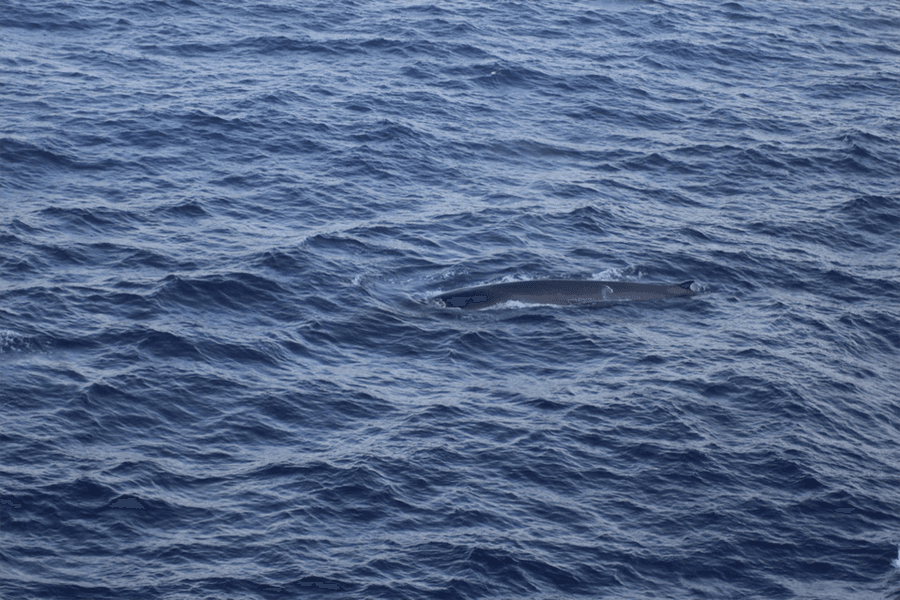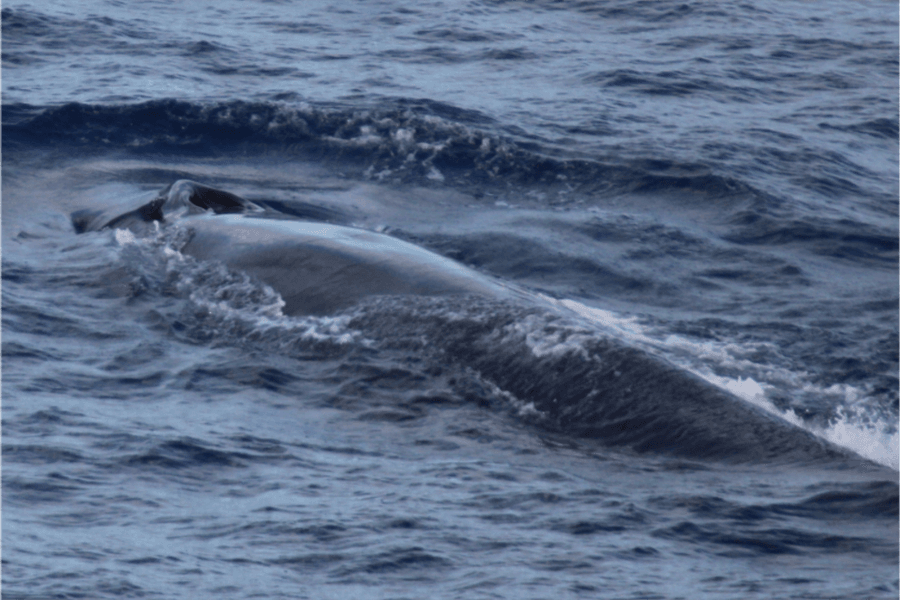For the four of us working with Brittany Ferries over the Bay of Biscay this summer, I think we can all agree it’s been a fantastic experience.
We’ve been spotting cetaceans mostly, but have also seen a lot of seabirds and even the occasional shark, jellyfish and tuna! You can learn a lot and be amazed by documentaries or desk-based learning, but it’s never quite the same as seeing things for yourself out in the wild. And we had this incredible opportunity this year and got to do it whilst sharing the experience with lovely Brittany Ferries passengers as well. And so, here is a selection of some of our most significant cetacean sightings and experiences with a reflection on the key challenges that these fantastic animals are facing.
Common dolphins and bycatch, Tash (Galicia)
The short-beaked common dolphin - a name that really doesn’t quite do these beautiful cetaceans justice. Other than the frequency in which one can see the common dolphin around the coast of Brittany and throughout the Bay of Biscay, the common dolphin is quite remarkable in many ways. To begin, they are the fastest of the dolphins - clocking up to speeds of 60-65 km p/h! Their graceful acrobatics know no bounds, and, as my first cetacean sighting with ORCA, they hold a special significance for me.
Always eliciting shouts of joy from the passengers onboard - the common dolphins were often the first sighting of any cetacean for most passengers and fulfilled many life-long dreams just by appearing.
Most often, we would spot the common dolphin in areas where the fish were abundant (of course!), but this also often would coincide - not only with a frantic array of feeding gannets - but also the presence of fishing boats.
Bycatch (the incidental capture of non-target species such as dolphins, marine turtles and seabirds when fishing) is a serious issue for smaller cetaceans; the common dolphin alongside the harbour porpoise are the UK’s most frequent bycatch victims. Something that ORCA are continuously working hard to correct. Hopefully, the future holds safer fishing practices for all ocean life. Things that we can do today, is really think about where the fish on our plates come from - what fish it is, how it was caught and where from. Small, everyday changes can make all the difference.
Sperm whales and plastic pollution, Maria (Galicia)
“Seeing sperm whales was the highlight of the season for me! Getting to see them close to the ship was amazing and something I will never forget. I was so happy that so many passengers got to see them as well!”
We spotted the ever-elusive sperm whale right at the beginning of the season. A truly special cetacean - the largest toothed predator on the planet and also the animal with the largest brain (and the loudest sound!) in the animal kingdom. These divers from the deep are quite unique.
Unfortunately, their size and strength does not protect them from the challenges posed by human waste, such as plastic pollution. Plastic ingestion and fishing net entanglement are serious threats to a population that are only just starting to recover from the devastation caused by commercial whaling in previous centuries - particularly the 20th century. The solutions can come from us. Reduce, reuse, recycle waste might sound like a broken record now - but it really does help if we all do our part. As for the 300,000 tonnes of discarded nets that are thrown into our oceans every year - we need to continue to work quickly to find solutions and protect our oceans as much as possible.
Fin whales and ship strike, Joanna (Pont-Aven)
First up the size of both the fin whales themselves, and their blow. I knew that fin whales could be up to 27m long, and have a blow that’s 4-8m tall. And fortunately for us, you can see a 4-8m tall blow even on the horizon (on a clear day). It looks a bit similar to a jet of steam, or a puff of thick smoke, or a fountain spray coming out of the ocean, unmistakable once you’ve seen one, as there’s really nothing that looks quite like it.To see a nearly 30m long animal surface next to the ferry, as more and more of its back becomes visible until finally you see a tiny dorsal fin at the end, following this big cloud of white streaming up from the animal’s blowhole, is really something special.
It’s wonderful to have a close encounter with these incredibly large whales, but sometimes they can get too close. They can actually get hit by ships. Fin whales in particular, are quite prone to it, and encounters can be fatal. Training crew, observing speed restrictions in certain areas and planning routes to go around whale hotspots can all help minimise this risk.
Cuvier's beaked whales and noise pollution, Lauren (Pont-Aven)
It always feels like we’re seeing a little celebrity when Cuvier’s beaked whales pop up; they have the deepest dive of any animal on the planet - about 2,992m from the surface! They can hold their breath for 3 hours and 42 minutes too so we’re doubly lucky when we do see them, which has been quite often this season. They’re very well adapted for these deep dives, but my favourite deep-diving adaptation is their flipper pockets: they actually tuck their flippers into these pockets to make themselves that little bit more streamlined for the dives. They also exhale about 90% of the air in their lungs before they make a deep dive as this allows them to be less buoyant. They’re nicknamed the goose-beaked whale and I’m not entirely sure if that’s a compliment or an insult, but when you see them from the Pont-Aven you can really see why!
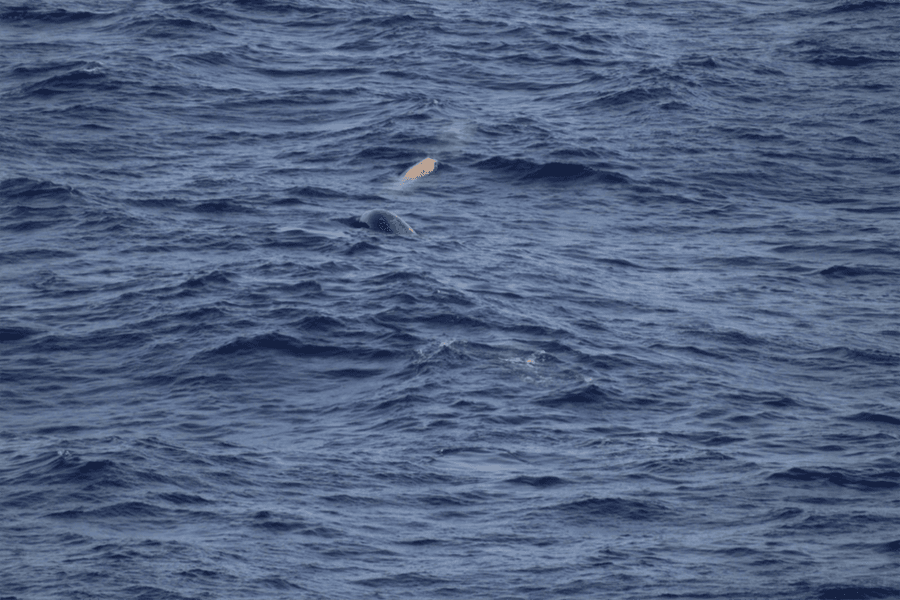
Continuous noise comes from things like ship engines; as we’re transporting more and more goods via cargo ship and human activity is increasing in the oceans, we’re contributing to more noise pollution too. Quite often, ship engine noise occurs at a similar frequency to that used in whale communication, and so it can mask communication between individuals. ORCA uses ‘vessels of opportunity’ for our work; this means that we always work on ships that would be making these journeys regardless of whether we were on them, we make sure to never put more traffic into the oceans!
Impulsive noises include things like military sonar and seismic air guns used in oil and gas exploration - these can impact cetaceans in a number of ways, the first being hearing damage. Hearing is really the primary sense for cetaceans and so without this many have difficulty communicating, navigating or feeding (particularly toothed cetaceans like dolphins or beaked whales which use echolocation). This hearing damage or deafness can then lead to strandings and deaths - quite often on a large scale. Between August and September 2018 over 70 Cuvier’s and Sowerby’s beaked whales, and Northern bottlenose whales washed up along the Irish and Scottish coasts, which was thought to be the result of active military sonar.
Impulsive noises can be a particular issue for deep-diving species like the beaked whales - the shock of these loud noises can cause changes in behaviour, heart rate, or even cause them to surface too quickly, leading to decompression sickness (‘the bends’). The impacts of noise pollution are too vast to cover in just this short blog post, but if our work can help identify cetacean hotspots, hopefully, we can begin to protect these areas from the worst of human-induced noise pollution!
There’s so much to learn out there, but nothing like seeing and experiencing some of it for yourselves. So we encourage you to come and join us on a ferry trip over the Bay of Biscay next season!

